Lawn Care Basics: How to Dethatch and Aerate
Your guide to a healthy lawn
When it comes to lawn care, a bit of extra seasonal labor can make a world of difference for the health of your grass. Throughout the year, the soil can become compact and additional materials get mixed into your lawn. Both of these scenarios prevent the grass and soil from getting the water, oxygen, and nutrients they need in order to thrive. By first dethatching your lawn, and then aerating it, you’ll help ensure that the fertilizer and new seeds are able to do their jobs. Whether you have a smaller city lot or some acreage, we’ll show you the steps and equipment you need to have a healthy, green lawn.
Dethatch
What is Dethatching?
When it comes to lawn care, thatch is the term for the layer of organic matter that builds up on your lawn. It can be a mixture of both living, dead, and decaying plants. A thin layer of thatch is necessary to act as a protective barrier, but too much can harm your grass. An excess thatch layer (one greater than half an inch) can prevent sun, water, oxygen, and nutrients from reaching the soil, and it creates an environment that pests can thrive in. Dethatching is the process of removing that layer of buildup, by using either a rake or spinning blades to slice through the thatch.
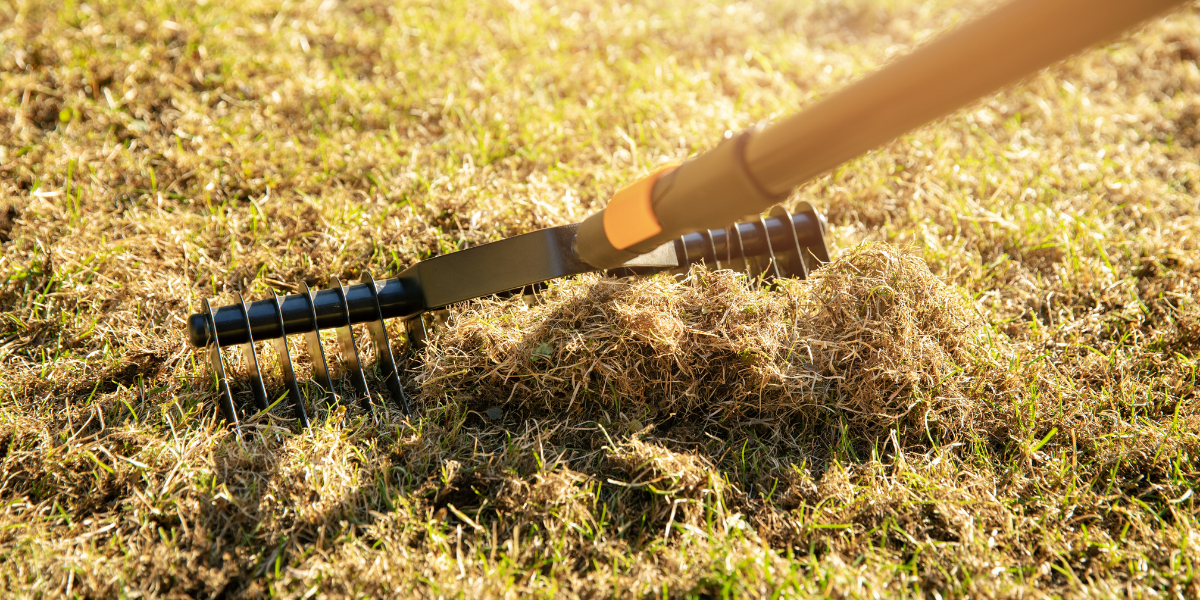
When to Dethatch Your Lawn
If you live in an area that experiences a traditional winter, dead matter can build up on your lawn over the season and won't be able to fully decompose with the cold temperatures. To prevent any further damage to your lawn, you’ll want to dethatch once the growing season has started. Once you have mowed your lawn a couple of times in the spring, the grass is actively growing and is in a good position for a dethatching session. Depending on how much buildup you get on your yard over the summer, you may want to dethatch again in the early fall when the grass is still growing.
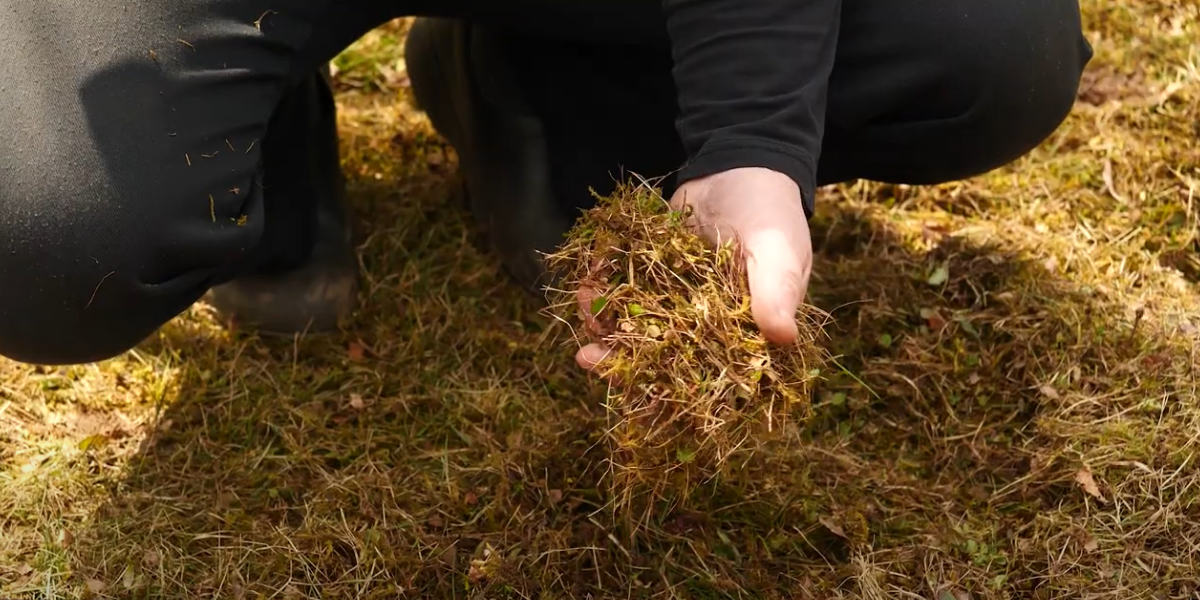
How to Dethatch Your Lawn
The simplest way to dethatch your lawn is with a rake, but if you have an excessive thatch layer you may prefer to use a machine. There are attachments you can get for your lawnmower, or in our situation we rented a professional model as we had a large lawn to work on. These attachments or machines will have multiple blades or fingers, that spin around and slice through the thatch layer. If you keep the blades high, it’s called “power raking” and causes less stress to your grass. If you drop the blades lower, it will slice through the top layer of soil, and is most effective at removing a thick layer of thatch. Once you’ve finished up, all that old organic matter can be raked up and put in your compost or green bin.
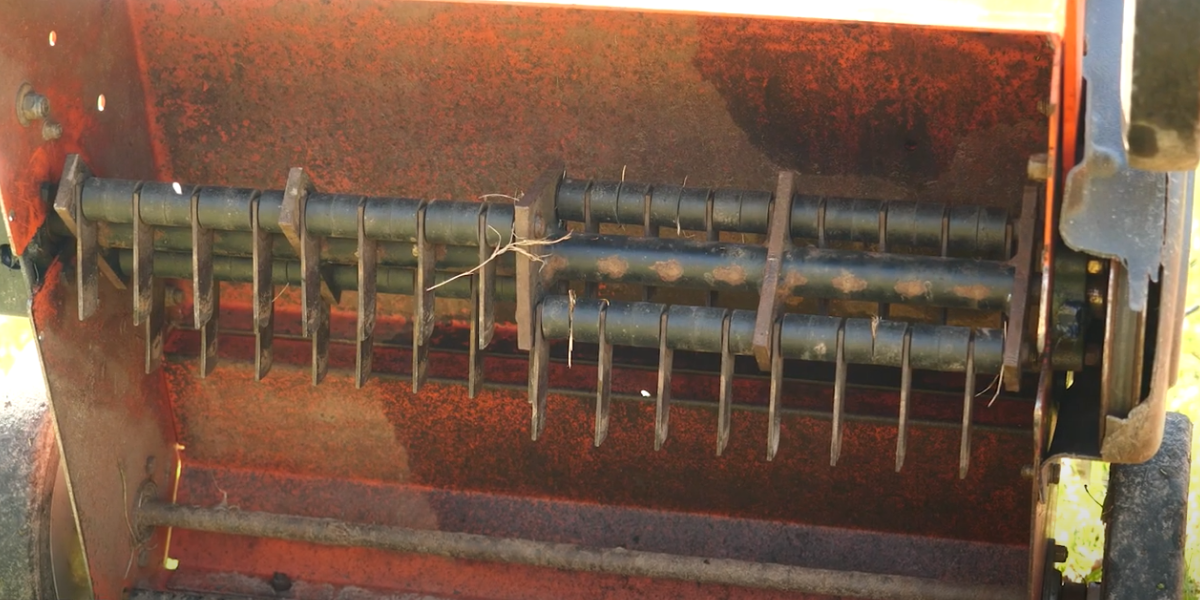
Aerate
What is Aeration?
When the soil on your lawn becomes compacted, it also makes it difficult for oxygen, water, and nutrients to penetrate through. Aerating your lawn is a process that allows your soil to breathe again by puncturing or perforating the lawn, which is achieved by either “spiking” or by removing cores of soil. A spike-style aerator punctures the soil to allow the various nutrients to get down to the roots. A core aerator actually removes a core or plug of soil from the ground and leaves it on top of the lawn. These cores break down with regular mowing and should be left on the lawn. Yes, they do look like turds, but they’ll be beneficial to your lawn!
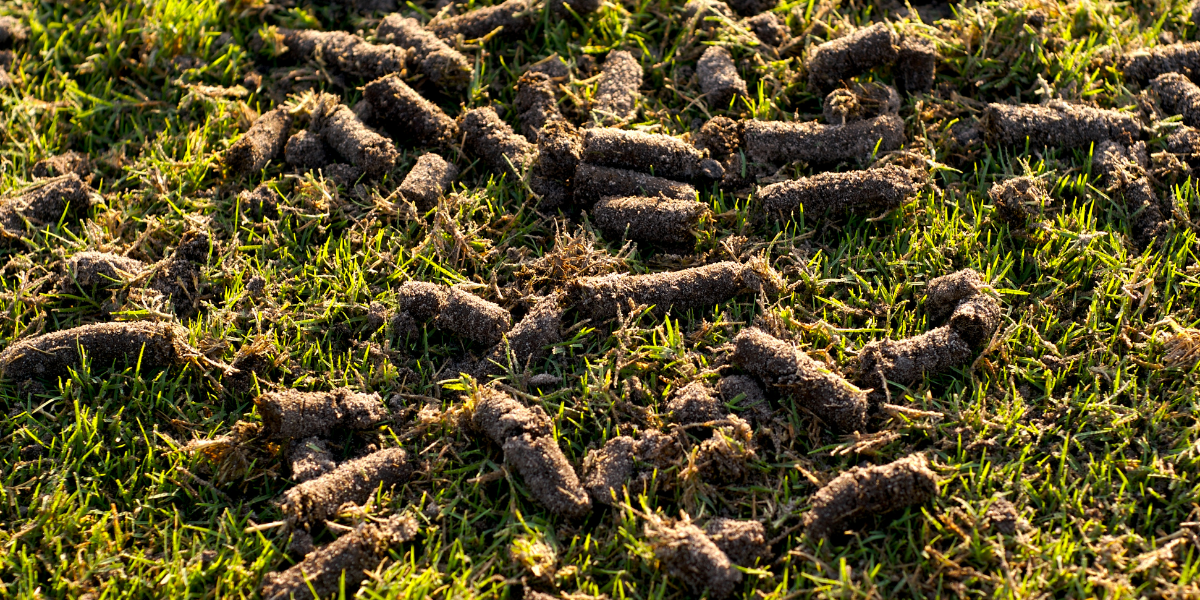
When to Aerate Your Lawn
Similar to dethatching, you should aerate the lawn when it is actively growing. Dethatching should happen first to remove the dead layer of debris, then follow with the aerator to relieve the compacted soil. Depending on where you live, spring or early fall is the best time to aerate your lawn since the grass is actively growing at this time. Make sure to avoid aerating when the weather is hot and dry, you don’t want to add additional stress to your grass!
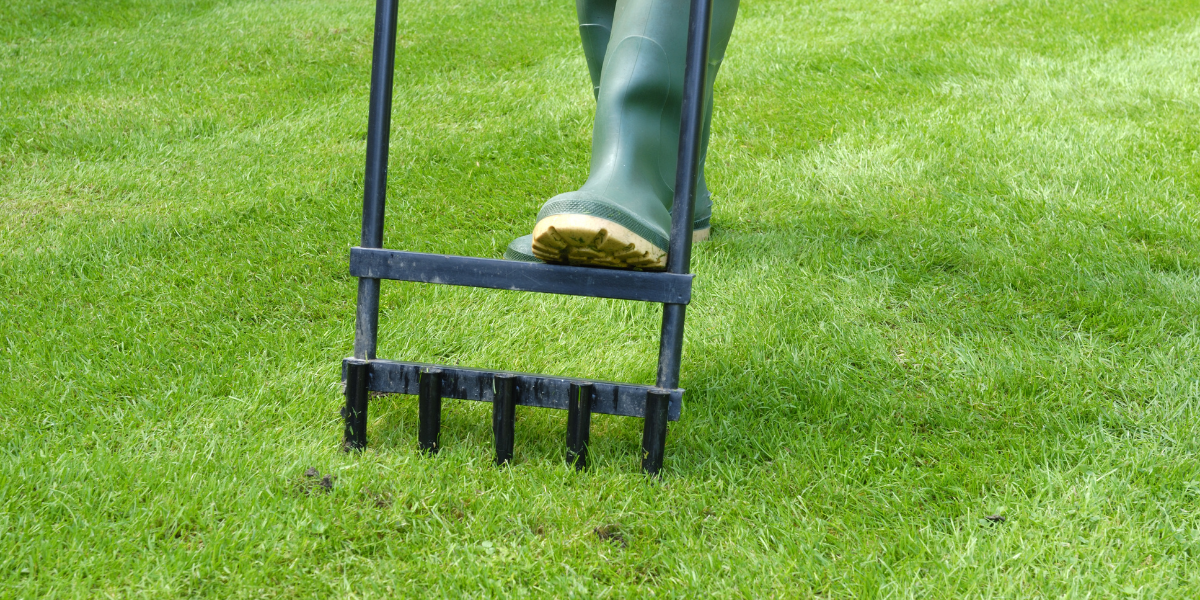
How to Aerate Your Lawn
Your lawn will need to be moist in order to aerate, so pick a day either after a rainstorm, or water the day prior. If you have a smaller yard, or don’t want to rent machinery, there are manual spike aerators you can use. These include spikes you strap on to your shoes, and then walk around your yard, or a push-style of aerator. Neither of these will remove plugs, or cores, from the lawn. They’ll do the trick but aren’t the best choice for a really compacted yard.
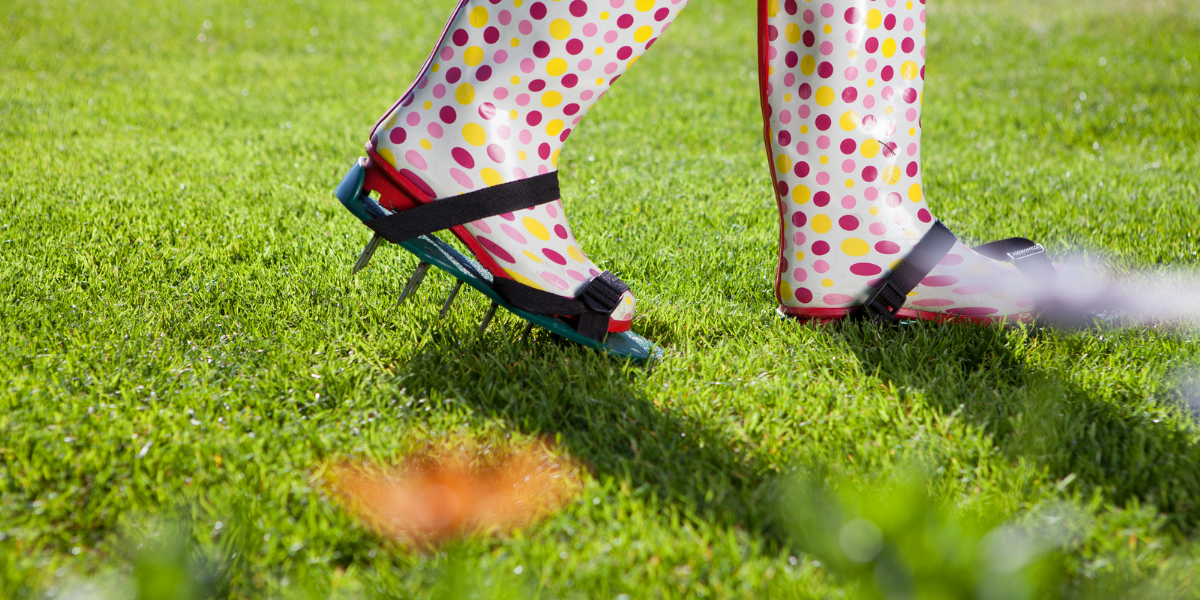
With a core-aerator machine, you may need to make multiple passes in order to get the best coverage. As mentioned above, make sure you leave these cores on your lawn afterward. Once they have dried out, you can run them over with the mower to break them down. The soil will redistribute throughout the yard, helping to fill in the holes again.
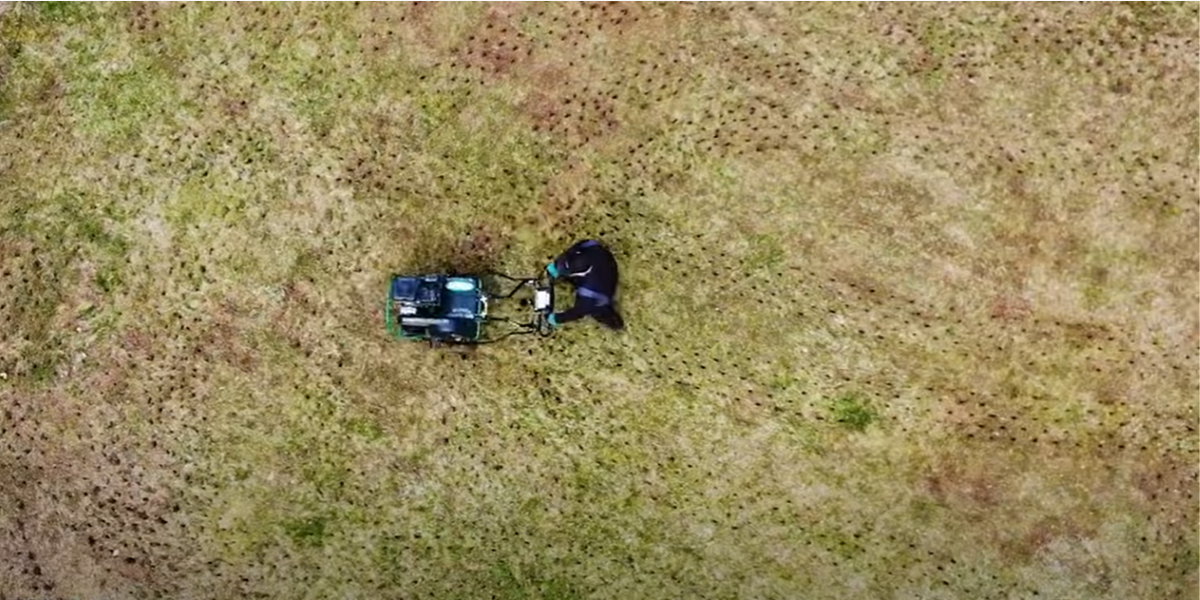
With the excessive thatch removed and the compacted soil now able to breathe, your grass will be in prime condition to allow for strong root growth. Sunlight, oxygen, and nutrients will all be able to get down into the soil, helping to ensure that your grass is coming in lush and green. If you need to spruce up your lawn and garden equipment as well, we have the parts for you. Simply search for your equipment’s model number on our site to bring up genuine OEM replacement parts for your lawn equipment.
